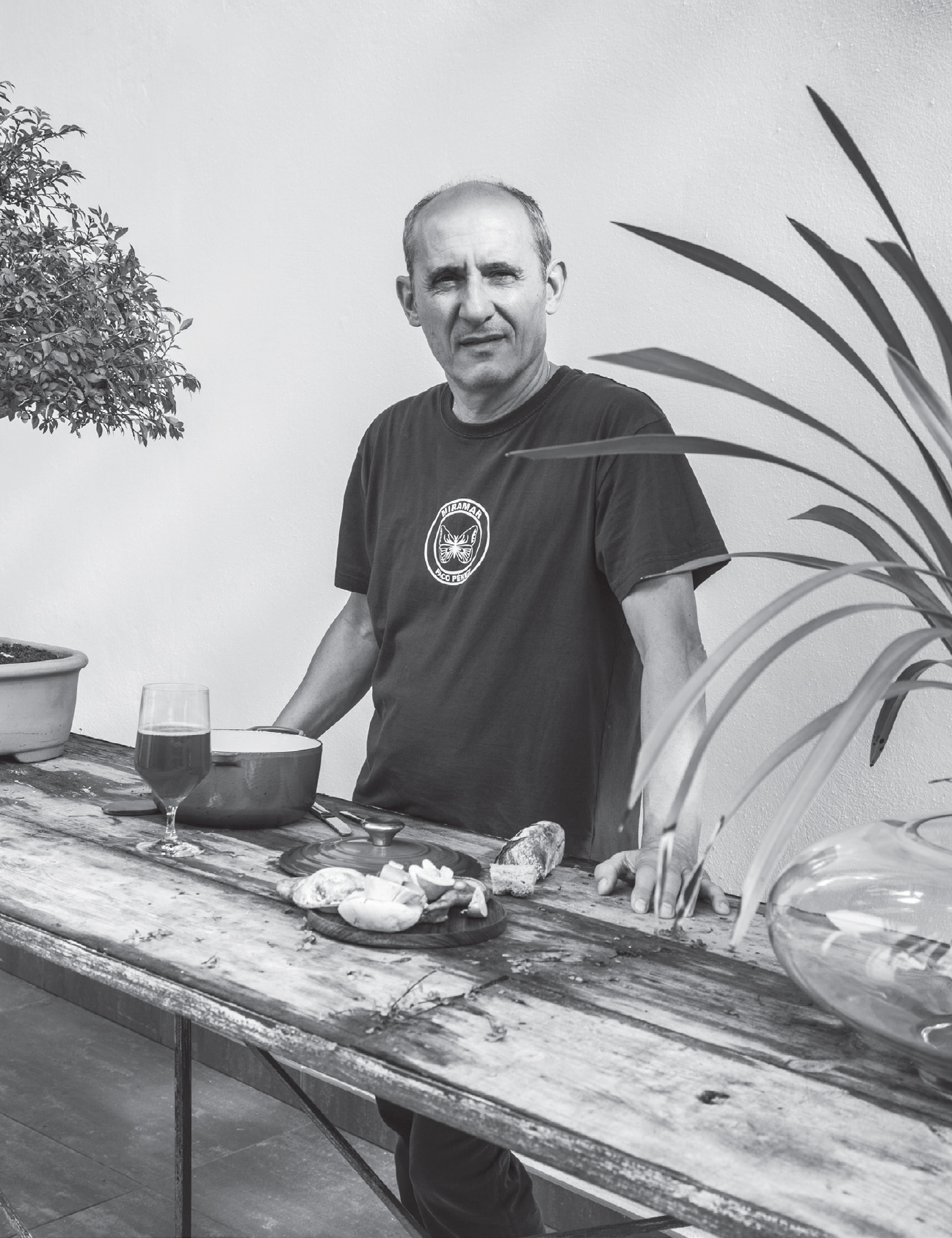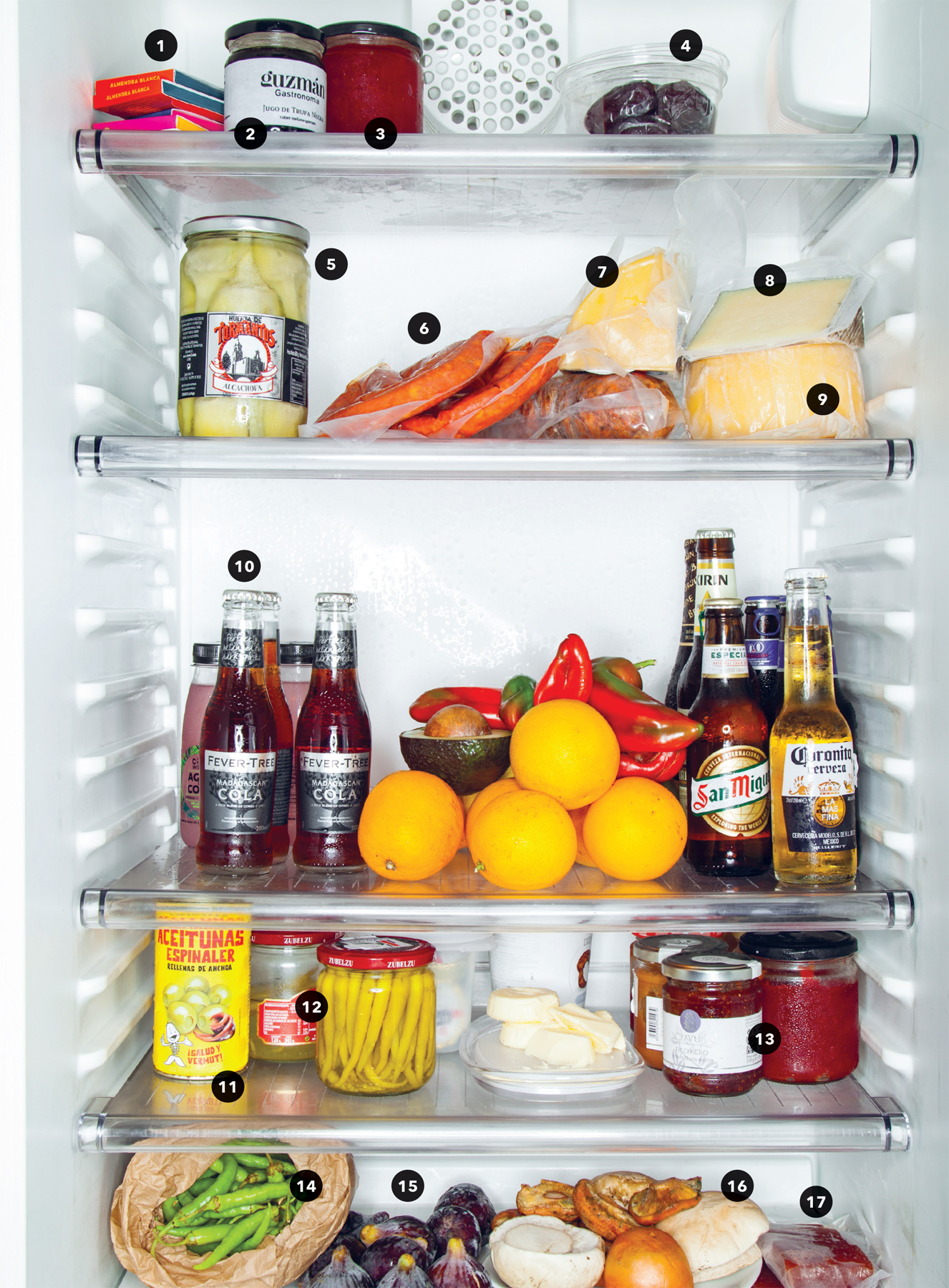The tiny, isolated beachside town of Llançà, for all its charm, may seem an unusual place to find one of Spain’s culinary masters. Virtually deserted during the off-tourist season, intrepid diners come here from the world over to taste the inventive mar i muntanya (surf and turf) cuisine of Paco Pérez. But it makes total sense to Pérez. “Even before people came to visit, the fishermen used to light fires on the beach and cook fish and drink and talk about life. I love this place—the light, the sea, and the skies. I have a connection, and I am meant to be here,” he says.
Pérez grew up in Empordà, the Catalonian region in Spain known for its wine, and started working at his family’s tapas bar when he was twelve. He did a bit of cleaning and serving, and found it an enriching experience. Always curious, he soon found himself in the kitchen, experimenting. “One day I heard about pizzas, and tried to cook one on hot stones outside under the sun. Of course, it was a disaster!” he recalls.
Cooking school was, unfortunately, out of the question—Barcelona was too far away and the costs of bus fare and culinary school kept Pérez at home. He continued working summers and weekends at local restaurants. Eventually he trained with Ferran Adrià at the legendary El Bulli in nearby Roses. Adrià had a huge impact on the young chef: “He taught me how to approach food with the senses: the smell, the feel, and taste.” His final training was just across the French border with chef Michel Guérard, one of the founders of nouvelle cuisine, where he learned some French as well as respect for what he was doing.
After working with Guérard, Pérez did military service (compulsory in Spain when he was a teenager). “My task was to cook, and my superiors used to like what I made. Therefore, I could go to the market sometimes to buy what I needed, which was a respite,” he says. After he was discharged, he heard about a family who needed help at a tiny beachside restaurant called Miramar. He decided to make a little extra cash one holiday weekend, and met Montse, the proprietors’ daughter. They fell in love, married in 1984, and Pérez put down roots for the last time.
Montse’s family were originally from Barcelona but had fled the city during the Spanish Civil War. They’d opened the restaurant in 1939, building the business up from a simple shack to a forty-five-room inn and restaurant. In the 1990s, when Catalonian creative cooking became better known, they decided to upgrade the family business.
Concentrating on seasonal items sourced from the nearby area, Pérez decided to use many of the more technical approaches that he had learned over the years, such as smoking, fermentation, and spherification, the process of turning liquids into shapes. His avant-garde approach let him celebrate the restaurant’s Mediterranean roots in a modern way. “We weren’t going to serve guests a tomato salad or a plate of pasta,” he says. “People come to restaurants for a special experience.” And so dishes such as griddled sea cucumbers (served under a glass dome filled with smoke from burning vines) and a “sea floor”—sea urchin and caviar with Hollandaise sauce served along with a 3D-printed coral design—came to delight and surprise guests and earned the restaurant two Michelin stars.

CURRENT HOMETOWN: Llançà, Spain
RESTAURANT THAT MADE HIS NAME: Miramar, Llançà, Spain
SIGNATURE STYLE: Avant-garde Catalan
BEST KNOWN FOR: His Michelin-starred restaurants and his passion for Catalonia
FRIDGE: Balay
Pérez and his family live just behind the restaurant, and there is little separation between work and home. “It’s not difficult,” he says. “You learn how to deal with all the responsibilities, and you just need to be happy and make others happy.” Meals, which are often on the fly in his tiled, homey kitchen, tend to be quick and easy. “At home there’s no Thermomix or anything—I cook like a normal person there!” says Pérez. “We eat potatoes, a little casserole of whatever’s leftover in the fridge, omelets, pomme frites. Everyday cuisine.”
After three decades at Miramar, and numerous restaurants across Europe, Pérez could live anywhere. But he’s happy to stay close to his first restaurant and in his beloved Catalonia. “I grew up in this magical place between the mountains and the sea,” he says. “People eat food based on the environment around us: the mountains, sea, and garden. There is a sense of religion in cooking for oneself, family, and friends. My best experiences have been here.”

- CHOCOLATE, gifts from a customer, and a favorite of his son’s
- BLACK TRUFFLE JUICE
- STRAWBERRY JAM
- SPANISH DATES
- ARTICHOKES
- SOBRASADA DE MAJORCA (cured sausage)
- IDIAZABAL CHEESE
- CHEESE, from Gipuzkoa, San Sebastián
- SHEEP’S MILK CHEESE
- FEVER-TREE MADAGASCAN COLA—“My wife and I prefer it to Coca-Cola. At least it’s less harmful.”
- ANCHOVY-STUFFED GREEN OLIVES—“Sometimes these are just for a snack or sometimes as a tapas in a meal.”
- PICKLED GUINDILLA PEPPERS
- JAMS
- GREEN BEANS
- FIGS—“We used to eat figs around the table with Julia, the brave woman who started this dream of a restaurant called Miramar. There was a fig tree in the garden and we ate fig by fig in the afternoon until the end of the summer.”
- MUSHROOMS, from a local market to use in pickled mushrooms
- DULCE DE MEMBRILLO (quince paste)
Q & A
What do Catalonians eat? They eat vegetable stews, different kinds of fish, and olive oil with everything. Every season is fantastic and products such as sea cucumber, pigs’ trotters, broad beans with fresh mint, and especially peas from Maresme are extraordinary. Unfortunately, now, with globalization, people also eat whatever they want.
What did your grandmother or mother use to make you? Open sea urchins with tomato bread.
What do you cook for your friends and family? Different kinds of rice, stews, fish over hot coals, Catalan-style green peas, and vegetables in a thousand ways.
What is your favorite food when coming home from a long day at work? Something simple in a crockpot. Almost every day I have a lunch cooked in a crockpot—could be rice (there are thousands of ways to cook rice), fish, meat, surf and turf. To be honest, I am always playing and exploring in the crockpot.
What foods do you hate? Hot dog with mustard and ketchup.
Looks like you love local cheese and sausages! Where do you get them? The charcuterie comes from my friend José, a high-quality butcher, and the fish, very fresh fish, is from my friend Xavi. I’ve known them both almost my entire life. Sometimes I’ll just buy things to take out, and sometimes we’ll all eat together. Most of the time we don’t have a plan. They come to Miramar and say hello and last month I went with José to Manchester and visited Tast, the restaurant I am advising there.
What do you reach for when you are starving? Yogurt with cereals and fruits and honey.
What food could you eat every day without getting sick of it? Iberian ham with pa amb tomàquet, a rustic Catalan specialty of toasted bread rubbed with tomato and garlic.